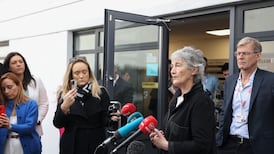If there is one thing Co Wexford is famous for, it's strawberries. People may have only started growing them there in the 1930s, but it's hard to conceive now of them being from anywhere else in Ireland.
As a descendent of one of the county's oldest strawberry-growing families, John Greene knows more than his fair share about the fruit. His love for it led him to give up a successful career as a management consultant some 20 years ago to set-up his own farm where he also grows a number of other fruits including raspberries, blackberries, blueberries and gooseberries that are primarily sold in two farm shops near Gorey.
Having previously dealt with wholesalers and the multiples, he’s now more interested in selling the produce himself locally.
“Our future is in growing less, getting a price that allows us to stay in business and trying to keep our costs as low as possible,” said Greene.
Despite tough times over the years, the business, which employs up to 38 people during the peak growing-season, is now thriving after diversifying more and focusing its efforts on direct selling to the public and away from multiples.
The addition of a restaurant, the conversion of a stable to an additional farm shop, and a decision to sell plants online are all helping the company to grow.
Selling direct
“As the years have progressed we’ve moved away from the supermarket model and now get at least half of our sales direct from the farm shops.
“That means a decent margin for us and ensures we get paid today. With the supermarkets, you could be getting half of what you’d get from direct sales once you take into account the lower prices paid, the labelling and transport, and so on. Then there can be a long wait before you receive payment,” he said.
As Greene recalls, it was only with the outbreak of the second World War, and the subsequent decline in imports to Ireland that led to a decision by people in Co Wexford to start growing strawberries.
By the time Greene was growing up, many of the strawberry growers in the State had begun selling their produce for export to be used in jam.
“By the 1970s, there were about 750 strawberry-growers in Co Wexford and there was a small industry based around growing the fruit to sell overseas. We were one of those families. Like many others, we had a small farm that had an acre reserved for strawberries, which served as a source of income for the kids going to school,” he said.
Out in the field
After studying commerce at UCD, Greene went to work as a management consultant for 15 years with
Glanbia
but, though he liked working for the company, he found himself growing more frustrated at being stuck indoors most days.
“Every sunny day spent in the office was a day spent missing being out in the field. I decided over time that I wanted to do more for myself and felt that it would make sense to do something with strawberries as I knew something about it. In 1987, we rented a seven-acre field and started growing fruit as a sideline. We did this part-time for five years or so before deciding to take the plunge and go full-time with it,” he said.
As Greene is the first to admit, it was a risky move for him to make, particularly as he had two small children. However, the business got off to a strong start and all seemed well until industry changes forced it to change the way it operated.
“Jam-makers began buying fruit from the likes of South America and Poland, and the price they would pay us fell. This led us to move away from the wholesale market, initially towards the supermarkets, but eventually on towards setting up a second farm shop from which we could sell fruit directly to the public. We also set up a restaurant,” he said.
To make the farm and the two shops successful, the business had to change the way it operated over the years, becoming leaner and relying more on technology to speed-up manual processes.
Wrapping punnets
“We would have invested very heavily in labour-intensive machinery to do things such as wrapping punnets and covering plants, because labour costs were one of our biggest expenses. We’ve also focused on growing less, but growing it better.
“For example, back in the 2000s we had a hundred acres of fruit growing, but it was all subject to the elements and a whole season’s worth could be wiped-out by a few days of continuous rain. We learned our lesson from that and these days only have about 30 acres of fruit but all of that is under cover, which not only protects the fruit, but also ensures a better quality and consistency,” he said.
“The recession made no difference to our business. The weather is far more important to us than the state of the economy. Our turnover could be halved on a wet, miserable day, so making sure we can protect the fruit ensures that we can keep going,” Greene added.












